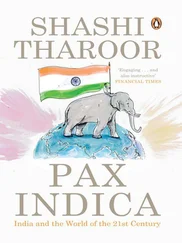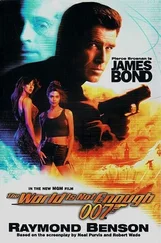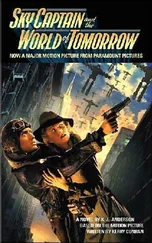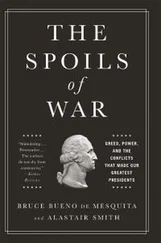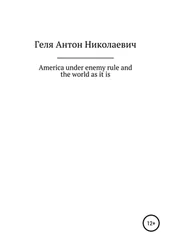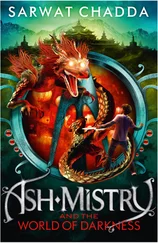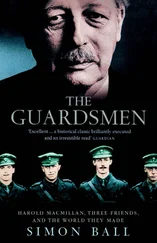Anne Heller - Ayn Rand and the World She Made
Здесь есть возможность читать онлайн «Anne Heller - Ayn Rand and the World She Made» весь текст электронной книги совершенно бесплатно (целиком полную версию без сокращений). В некоторых случаях можно слушать аудио, скачать через торрент в формате fb2 и присутствует краткое содержание. Жанр: Биографии и Мемуары, на английском языке. Описание произведения, (предисловие) а так же отзывы посетителей доступны на портале библиотеки ЛибКат.
- Название:Ayn Rand and the World She Made
- Автор:
- Жанр:
- Год:неизвестен
- ISBN:нет данных
- Рейтинг книги:5 / 5. Голосов: 1
-
Избранное:Добавить в избранное
- Отзывы:
-
Ваша оценка:
- 100
- 1
- 2
- 3
- 4
- 5
Ayn Rand and the World She Made: краткое содержание, описание и аннотация
Предлагаем к чтению аннотацию, описание, краткое содержание или предисловие (зависит от того, что написал сам автор книги «Ayn Rand and the World She Made»). Если вы не нашли необходимую информацию о книге — напишите в комментариях, мы постараемся отыскать её.
Ayn Rand and the World She Made — читать онлайн бесплатно полную книгу (весь текст) целиком
Ниже представлен текст книги, разбитый по страницам. Система сохранения места последней прочитанной страницы, позволяет с удобством читать онлайн бесплатно книгу «Ayn Rand and the World She Made», без необходимости каждый раз заново искать на чём Вы остановились. Поставьте закладку, и сможете в любой момент перейти на страницу, на которой закончили чтение.
Интервал:
Закладка:
There had been a number of purges at the university since Rand arrived there in 1921. In the fall of 1922, for example, her eminent professor N. O. Lossky, along with his wife, his mother-in-law Mme. Stoiunina, and 220 other famous Russian academic philosophers and intellectuals were arrested for so-called anti-Soviet activity and deported on what came to be known as the “Philosophy Ship.” (On Mme. Stoiunina’s arrest, Rand’s alma mater the Stoiunin school closed its doors forever.) A year later, while she was in her third and final year, the university announced the largest purge yet of “socially undesirable elements” among the students. She was one of four thousand students expelled, a third of the student body, some of whom—“young boys and girls I knew” she later said—were sent off to die in Siberian prison camps. She was officially charged with “not fulfilling academic requirements,” but this was merely code for belonging to a prerevolutionary middle-class family and not being an ardent-enough Communist. (In her first year, she, like Kira, made “all kinds of anti-Soviet remarks” before realizing that she was endangering her family and herself.) The purge and its chilling, academically stifling aftereffects are unforgettably portrayed in We the Living . Rand, however, unlike her heroine Kira, got an unexpected reprieve. When a group of visiting Western scientists heard about the student purge and complained to their Communist hosts, she and other third-year students were reinstated and allowed to graduate.
She received her diploma on October 13, 1924. Her university records show that she had passing grades in all her subjects. Later, she would claim that she had finished “with highest honors”—an impossibility in a system that had been converted to “pass,” “fail,” and “retake.” Her followers would repeat this story and other questionable anecdotes about her prowess as a student, although scholarship was never her strong suit and by that time she didn’t need anyone to bolster her claim to genius.
While still at the university, Rand joined local writers’ clubs, but members were supervised and turned out little other than pat political treatises. Still, she constructed outlines for plays and stories and wrote an interesting short novel in this period. The text of the novella seems to be lost, but as she described it in 1960, it involved a meteorological disturbance that causes a gigantic airplane to spin out into space and begin to circle the earth. The passengers are a mixed group of scientists and Communists. Luckily, the plane is loaded with supplies. Using these, the scientists create a self-sustaining miniature economy that benefits all on board, even allowing them to grow food, while also devising a plan to get the airplane back to earth. Then the Communists gain the upper hand. In a chapter called “Humanity in a Teaspoon,” she showed the Communists gradually picking apart and destroying everything the scientists have accomplished. Soon everyone is starving. The Communists beg the story’s hero, a leading scientist, to take charge. He agrees. As the story ends, he begins to re-create his earlier work, with the implication that all will be well and the plane will return to earth. This, of course, echoes the ending of Atlas Shrugged , except that there the novel’s hero, John Galt, refuses to help the socialistic villains and instead flies his plane to a self-sustaining miniature world hidden in the Rocky Mountains; there he waits for the incompetent “looters and moochers” to perish of their own incompetence. Although Rand used many of the same ideas and motifs in both narratives, by the 1950s she appeared to be less hopeful that minds can be changed, villains converted, and mankind in general saved; a sealed world became her only answer.
It’s remarkable that this story is set aboard an airplane, let alone one that orbits the earth. If Rand’s memory is correct, she wrote it four years before Charles Lindbergh crossed the Atlantic Ocean. The explanation may lie in an influence she never publicly spoke of: the stories and novels of a few then-famous Russian futurist and surrealist writers who lived in St. Petersburg in the early 1920s and made their names by envisioning the utopian, and anti-utopian, potential of the decade’s new machines. Rand’s 1938 novel, Anthem , clearly reflects their influence, and so, perhaps, did this early effort. She almost surely encountered their work, both published and unpublished, in an underground network connected to one of her writers’ clubs.
Aircraft always fascinated Rand, although until late in her life she was too fearful to fly in a plane. In Atlas Shrugged , Dagny Taggart and John Galt both fly solo through Colorado. In a 1969 essay, Rand described watching in “exaltation” as Apollo 11 streaked skyward from Cape Kennedy. And in “Philosophy: Who Needs It,” her famous speech to the 1974 senior class of West Point, she narrates a parable of an astronaut whose spaceship veers off course and crashes on a strange planet. The astronaut, who doesn’t understand his craft or its instruments, merely waits passively, hoping that something will intercede to save him, as aliens approach. The unstated moral: Airplanes, like skyscrapers, are the domain of the intelligent hero.
While still at the university, she outlined another novel foreshadowing her masterwork, Atlas Shrugged . This novel concerned a beautiful, spirited American heiress who lures Europe’s greatest men to follow her to America. The Europeans are quickly becoming Communists, and the heiress wants to entice all men of ability to withdraw to a better world. A Frenchman is appointed by the Europeans to conquer and collectivize America. Our heroine offers him a million dollars to join her instead; he, in turn, offers her two million to come to work for him. They fall in love. The plot, though complicated, ends in the collapse of the Europeans. The heiress’s assistant in the novel is named Eddie Willers, the name Rand would also give to her heroine Dagny Taggart’s assistant in Atlas Shrugged —where John Galt lures all men of ability to withdraw to his mountain hideout.
In October 1924, diploma in hand, the nineteen-year-old Rand enrolled in a new performing-arts school called the State Technicum for Screen Arts, founded with Lenin’s explicit support in 1922 as a training camp for aspiring actors and cinematographers. The Bolsheviks viewed motion pictures as a promising new weapon in the international propaganda war between Communism and capitalism, and they offered free tuition to any ideologically qualified student who applied. (Rand probably would not have been admitted had her mother Anna not joined the Communist teachers’ union in February 1923, very likely to Rand’s and Zinovy’s disapproval.) She hoped to learn the techniques of screenwriting, and had a special reason: By now, she was determined to find a way to immigrate to America and work in the new and rapidly growing movie industry. This would be a manageable prelude to writing publishable plays and novels, which she knew would require English-language and literary skills she didn’t yet possess. The only alternative to emigration she could fathom, she later said, was to remain in Russia and oppose Communism by writing satirical films attacking it. She and her mother both foresaw that this road would be short and lead to death. Anna supported her dream of emigration; her father, fearful and perhaps dependent on her intellectual companionship, did not.
By spring, the way to America found her, through Anna’s relatives in Chicago. In the late 1890s, one of Anna’s aunts, Eva Kaplan, had immigrated to the United States and settled in Chicago with her husband, Harry Portnoy, and their eight children. Eva had borrowed part of the money for the family’s passage from her brother, Rand’s grandfather Berko Kaplan, and felt indebted to him. The Rosenbaums hadn’t heard from the Portnoys during World War I and the Russian Revolution, because mail service from the West had been interrupted. Now they received a letter, and Rand begged Anna to ask Eva’s grown daughters Minna Goldberg, Anna Stone, and Sarah Lipton to sponsor her for a visit to America. The Chicago cousins had brought over other Russian Jews, both inside and outside the family, and they readily agreed and sent the necessary affidavit of support. What’s more, Sarah Lipton owned and operated a Chicago movie theater, and she promised that Rand could work there if she liked. With affidavit in hand, in the spring of 1925 Rand applied for a Soviet passport, with the declared intention of visiting the United States for six months and of returning to Russia to make propaganda films. Luckily, a tiny window of opportunity remained open for Russians to go abroad; within two years, that and almost every other window of escape would slam shut.
Читать дальшеИнтервал:
Закладка:
Похожие книги на «Ayn Rand and the World She Made»
Представляем Вашему вниманию похожие книги на «Ayn Rand and the World She Made» списком для выбора. Мы отобрали схожую по названию и смыслу литературу в надежде предоставить читателям больше вариантов отыскать новые, интересные, ещё непрочитанные произведения.
Обсуждение, отзывы о книге «Ayn Rand and the World She Made» и просто собственные мнения читателей. Оставьте ваши комментарии, напишите, что Вы думаете о произведении, его смысле или главных героях. Укажите что конкретно понравилось, а что нет, и почему Вы так считаете.

